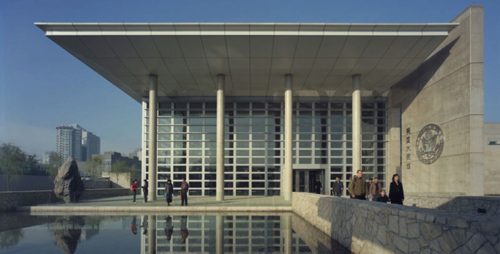Trump targets China and WHO
Yesterday, China’s National People’s Congress approved the national security law that will essentially end the notion of “One Country, Two Systems.” The law was first mentioned on May 21 at the opening of the annual Two Sessions series of political meetings.

Yesterday, China’s National People’s Congress approved the national security law that will essentially end the notion of “One Country, Two Systems.” The law was first mentioned on May 21 at the opening of the annual Two Sessions series of political meetings.
Today, U.S. President Donald Trump began his morning with a simple tweet: “CHINA!” This afternoon, he gave a 10-minute briefing at the White House “to talk about our relationship with China and several new measures to protect American security and prosperity” (on YouTube, transcript).
Trump blamed China for a “pattern of misconduct” mostly in trade, and IPR theft. But he also mentioned Beijing “unlawfully claim[ing] territory in the Pacific Ocean” and breaking “their word to the world on ensuring the autonomy of Hong Kong.” But he reserved most of the time to blast Beijing for the COVID-19 pandemic — Trump adopted Secretary of State Mike Pompeo’s preferred language about a “cover-up of the Wuhan virus.”
Trump said the U.S. would:
- Leave the World Health Organization.
- Eliminate “policy exemptions that give Hong Kong different and special treatment,” including on trade and immigration, though no details were given on what the new visa regulations might be.
- “Sanction PRC and Hong Kong officials directly or indirectly involved in eroding Hong Kong’s autonomy.”
- Study “the differing practices of Chinese companies listed on the U.S. financial markets, with the goal of protecting American investors.”
- “Better secure…vital university research and…suspend the entry of certain foreign nationals from China who we have identified as potential security risks.” Within hours, the White House released a Proclamation on the Suspension of Entry as Nonimmigrants of Certain Students and Researchers from the People’s Republic of China.
- This new policy, first reported earlier this week, will make graduate study in the U.S. impossible for any Chinese national with even a vague connection to “military-civil fusion” in China.
Trump did not:
- Announce an end of the Phase One Trade Deal, but there is clearly no hope for a Phase Two.
- Mention the Uyghur Human Rights Policy Act that the U.S. House passed in December 2019 and has now been approved by the Senate. Word is, Trump will discuss it next week. The South China Morning Post says that the “decision now falls on Trump to either enact or reject it, though a veto would be met with resistance from a united Congress.”
Beijing has not yet responded. It was early Saturday morning in Beijing when Trump gave his speech. But we have some idea of what’s coming from today’s responses from Beijing to yesterday’s American criticisms: China called U.S. moves ‘senseless,’ while Foreign Ministry spokesperson Zhào Lìjiān 赵立坚 said (in Chinese), “A mantis trying to stop a chariot is destined to fail.”
For more on Trump’s speech, see The China Project: Trump moves to rescind Hong Kong’s special status, terminates U.S. relationship with the WHO
See also: Europe reaches a tipping point over China’s Hong Kong gamble / Bloomberg (porous paywall)






